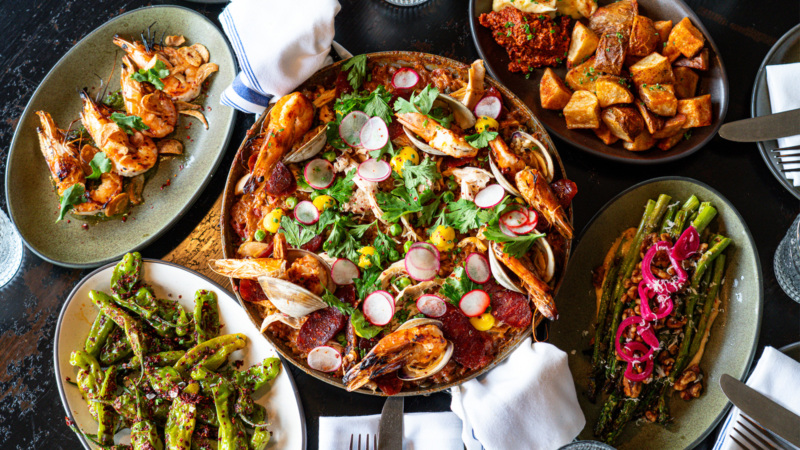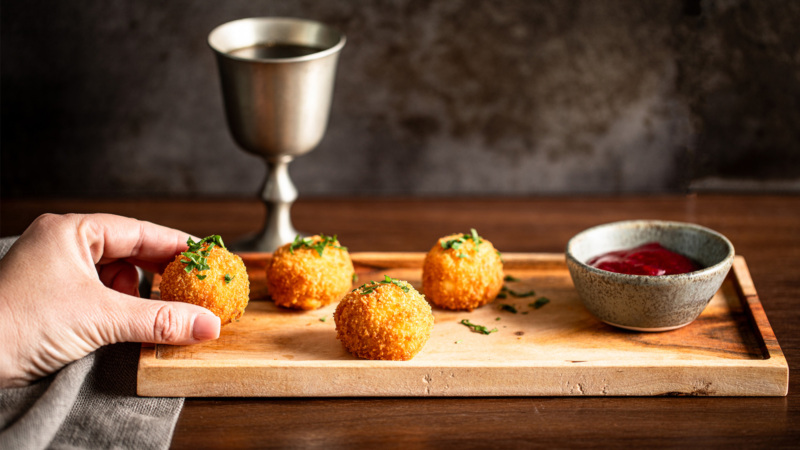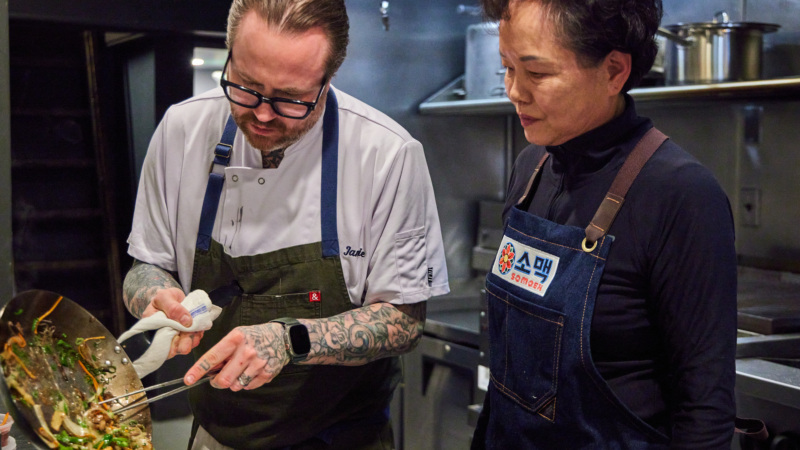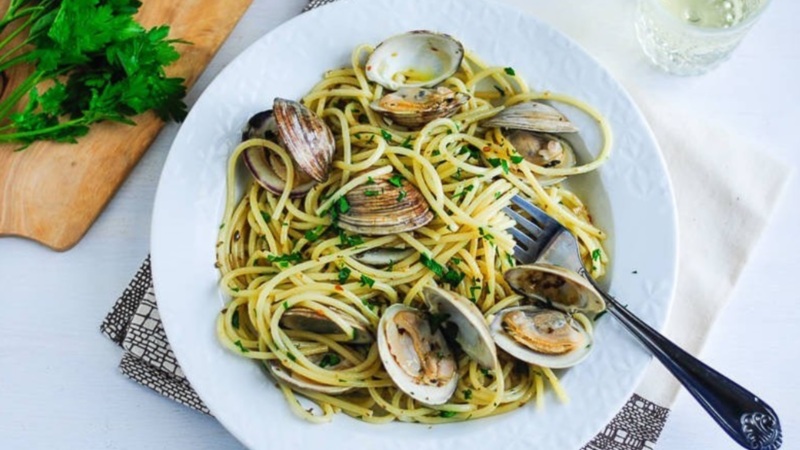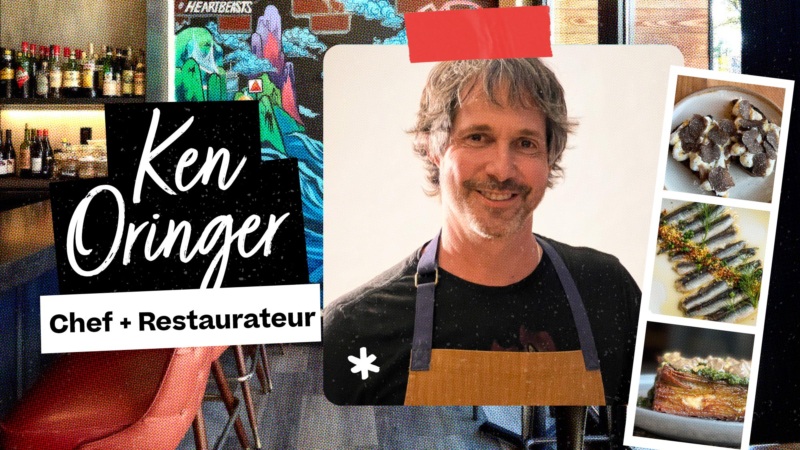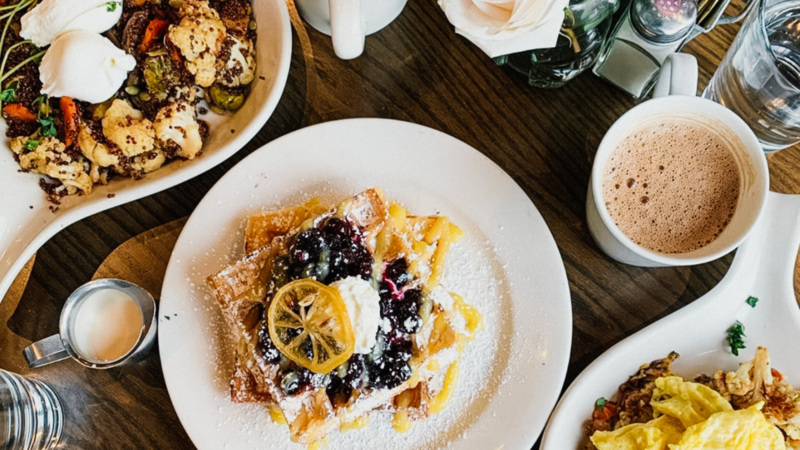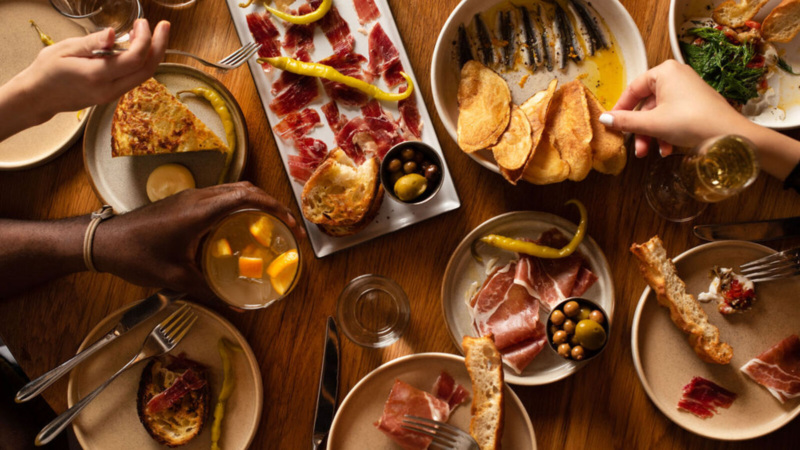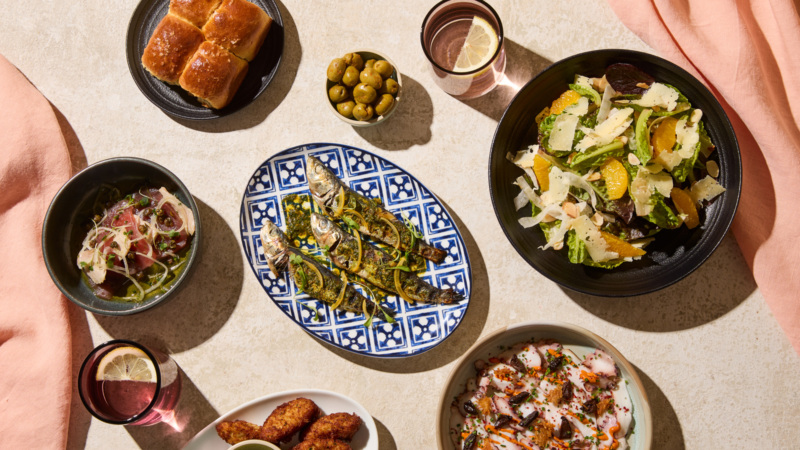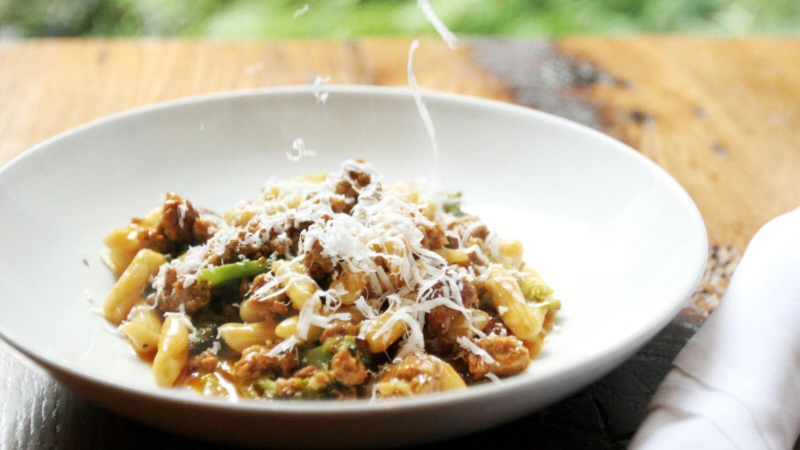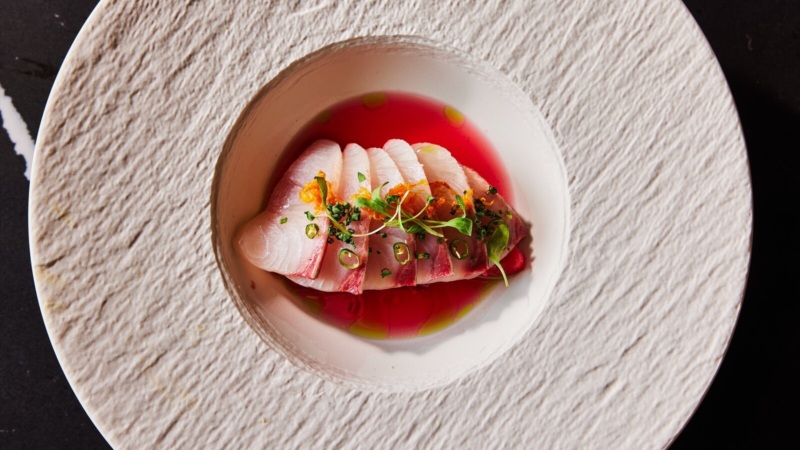
At Pammy’s, the Details Make the Restaurant Sing
Before you go to a restaurant, what do you want — or need — to know most? Welcome to The Rundown, a new series in which we share all the essentials about newly opened (as well as favorite) Resy restaurants.
This week, we’re taking a look at Pammy’s. Opened by married chef and owners Chris and Pam Willis nearly four years ago, the restaurant is a stunning American trattoria with an Italian bend, where the love is in the details.
Here’s an insider look into the little things that make this neighborhood staple, currently open for indoor and outdoor dining.
1. So, what’s with the name?
It all started with a blueprint. Well, sort of.
When Pam and Chris Willis were in the weeds of opening Pammy’s, they couldn’t settle on a name. Until Pam’s mother gifted them the blueprints* of another restaurant in Chestnut Hill, New Jersey called Pamela’s. It was Pam’s father’s restaurant, named after her.
“He passed away before that restaurant ever came to fruition,” says Pam. “Chris thought it was a moving story, to think we could kind of pick up where my father didn’t come to realize his dream.”
As the restaurant was meant to be more casual, Pamela’s became Pammy’s. But the name is also a salute to Pam herself, too.
“The partners of the chefs are the real heroes,” Chris explains, listing the late hours, long weeks, and the hard-to-manage work-life balance when family comes into play.
“It’s a tribute to Pam and partners of chefs everywhere,” he says.
(*If you’re a regular at Pammy’s, you may have seen those blueprints hanging in the bathroom in the past. Stay on the lookout — Pam is in the process of reframing them right now.)
2. Meet the lady of the house.
Not Pam Willis, though you’ll often find the gracious co-owner at the host stand. The lady in question here is an old statue the couple found in a Harlem storefront, just as they were designing the restaurant.
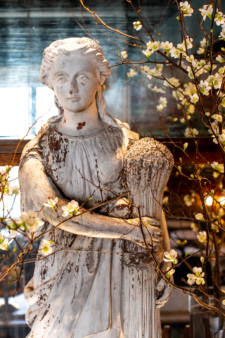
Representing Demeter, the Greek goddess of harvest, the five-foot-tall statue stands at the center of the bar and presides over the dining room. But the little detail that ties it all together is in what she carries: a bushel of wheat.
“Our kitchen is largely based around wheat and fresh flour,” Chris says. “We mill flour every single day at Pammy’s for our pasta and for our bread.”
“It was just so crazy that this statue appeared right at that time,” he says.
“She’s the first thing we purchased,” Pam adds.
3. Speaking of the little details…
Pammy’s is full of them. And that’s because Pam and Chris are design fiends who’ve salvaged a lot of antique finds to build out the restaurant. You only need to step inside to realize: This is a beautiful space.
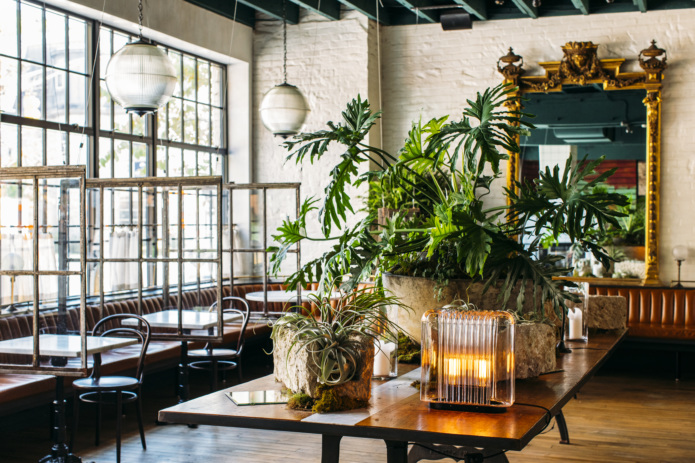
Look down: The floorboards you’re walking on were repurposed from an old mill in the Midwest. Look up: Those hanging holophane glass globe lamps — those used to be French streetlamps that lit up the City of Lights come dark. Examine the partitions that separate the tables more closely — you’ll see that they’re actually repurposed steel windows.
Even the leather for the banquettes was chosen carefully: As full-anilide leather, it’s not the kind you’d purposefully chose for a place where things can get messy, as it picks up accidental wine spills and the like, developing patina over time.
What this all builds up to is a restaurant filled with objects that tell a story.
“The restaurant is aging so beautifully.” Pam explains. “Like a Louis Vuitton bag, the more beat-up it gets, the more beautiful it tends to look.”
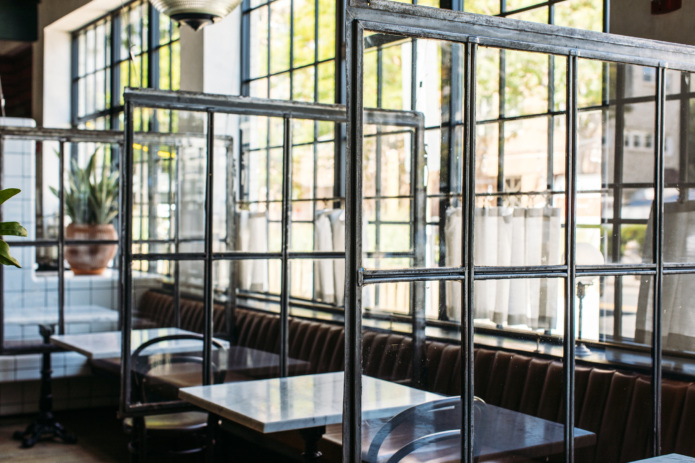
4. But nothing beats the showstopper.
“It does feel like the beating heart of the restaurant,” Chris says of Pammy’s focal point, a carved up, 18-seat communal table made up of multiple drafting tables that date back to the early 20th century.
Right now, it’s covered in flowers — Pam calls it the air purifying station — but before that, the table was the best seat in the house, boasting the energy of a communal table with the privacy of a bar. Pam hopes to reopen it to diners soon.
“That’ll be the official ‘The pandemic is over,’ [when] we can see the light at the end of the tunnel,” she says.
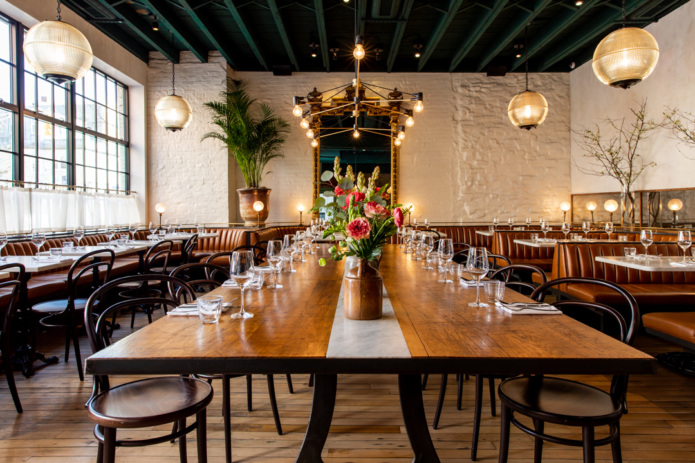
5. Ahem, less details, more pasta.
Ok, if you’re a first timer, the lumache with Bolognese (a ridged pasta shaped like a snail) is non-negotiable. Made with lamb, pork, veal, and chicken livers, the rich sauce is cut with a spicy and tangy locally-made gochujang.
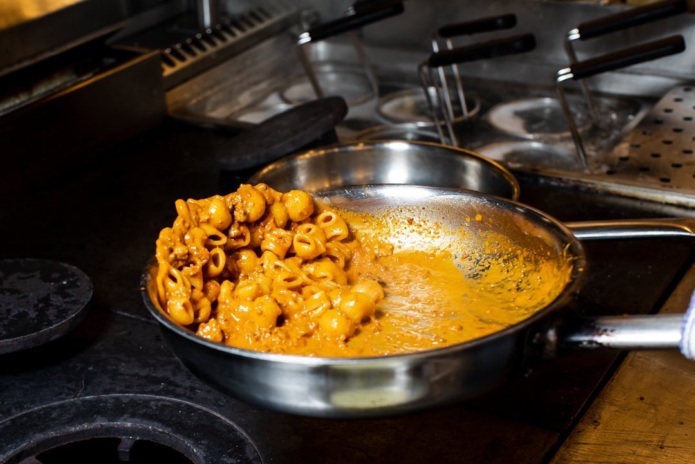
If you’re chef Chris though, you’d be eyeing the Spaghetti 2.3 (his favorite shape to make), named after the precise diameter of this thick noodle strand. The pasta is topped with the kitchen’s umami tomatoes — slow-roasted gems pickled in a mix of shoyu, honey, rice wine, and vinegar.
“It’s a really toothsome strand of pasta. I love it, it’s really hearty and delicious,” he says.

Pro Tip:
Pammy’s is selling its Bolognese sauce in a jar, featuring a label designed by Somerville-based Korean artist Choo Chung. You can also purchase the marinara sauce (a.k.a those umami tomatoes), too. Buy it all here.
6. Don’t forget a book on your way out.
When you walk into Pammy’s, you may notice an antique glass bookshelf on your right. Ask your server about it before you leave: It’s Pammy’s anti-racism library.
After the murder of George Floyd last May and the ensuing worldwide police brutality and systemic racism reckonings, Pammy’s started the library.
“We really try to recognize our white privilege. We spent a lot of this year re-evaluating our goals and ourselves, and hiring more people of color,” Pam says. “We tried to focus inside our restaurant and what we can do in our community.”
The library was an instant hit. Over the summer, guests actively borrowed the books, discussing Ta-Nehisi Coates’ “Between the World and Me” and Ibram X. Kendi’s “How to be an Antiracist,” among others. The MIT bookstore even offered them books at cost.
Today, Pam wants to expand on it by creating a community book club. The concept is still being fleshed out, but she hopes to launch it around May 1 (stay tuned here). And it won’t be virtual — she plans to host it outside, in a park or on Pammy’s patio.
“I’m excited to get community involvement, especially with how brilliant people are in this community,” she says, eagerly.
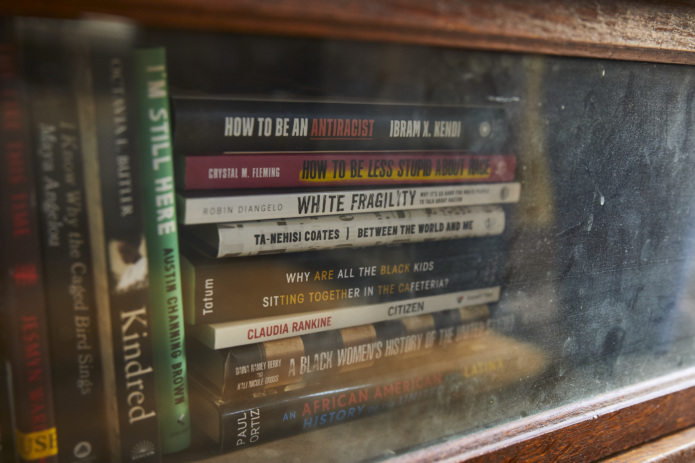
Pammy’s is open Monday through Saturday for indoor and outdoor dining, for a special $69 three-course dinner. Drop by on a Sunday for Pamily Sundays, where New-American Italian dishes are offered à la carte (menu here). Order Pammy’s takeout here.

